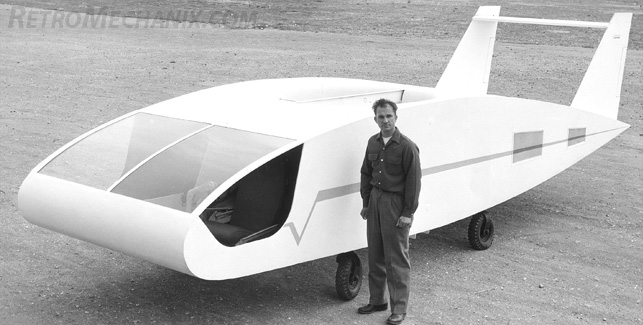Check out this article at RetroMechanix.com on the Verticraft Verticar, a wingless VTOL aircraft with an airfoil-shaped fuselage submitted to the Navy in connection with the Tri-Service Assault Transport competition of 1961:

The accompanying gallery features several high resolution photos and drawings of both the single and two-duct versions of the Verticar.
-Jared

The accompanying gallery features several high resolution photos and drawings of both the single and two-duct versions of the Verticar.
-Jared
